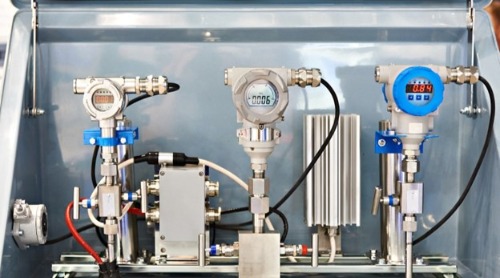Buyer's Guide: What to Know Before Buying Temperature Transmitters

Temperature transmitters are a fundamental component of industrial manufacturing as a means of process control. This is because they can provide feedback regarding temperature during different stages of the manufacturing process. Temperature transmitters convert the input signal from a wide range of temperature sensors, such as resistance thermometers (RTDs) and thermocouples, into a standardized analog or digital output signal.
In this guide, we’re going to introduce you to one of the common devices used in process control — the temperature transmitter. You can find various types of result-centric, cost-efficient, high-performance temperature transmitters. However, when it comes to the selection of a specific transmitter suitable for your applications, you should follow the guidelines of industry experts. Let’s take a closer look at how temperature transmitters work, some advantages and disadvantages, as well as how to choose the right one.
What is a Temperature Transmitter?
A temperature transmitter is an electronic device used to convert the signal produced by a temperature sensor into a standard instrumentation signal, making the temperature information more readable. This is especially important when the process that requires temperature monitoring is remote or not easily accessible. In most cases, the signal is sent to some sort of programmatic logic controller (PLC) or receiver.
Transmitters are physically designed to accept and deliver many different types of inputs and outputs, but the most common types are thermocouples and RTDs. These devices also require a power supply voltage and have different physical shapes depending on your application.
If you are thinking about using thermocouples, RTDs, or thermal resistors and are wondering how to communicate their micro-signals to 4-20 mA, then you must use a temperature transmitter.
How do Temperature Transmitters Work?
Temperature transmitters act as an interface between a control system and a temperature sensor. Transmitters convert analog thermal readings into digital output signals. How this is done exactly typically varies based on the sensor in use, but transmitters are often designed for numerous different inputs and outputs.
They also reduced background noise to enable accurate temperature monitoring with low degrees of interference. This complex system enables you to understand the thermal conditions of a process chamber or flow system as a value in either degree of Celsius or Fahrenheit in real time.
Temperature transmitters can be manufactured as stand-alone devices that are attached to one or more temperature monitors in a process control system or integrated into a unit’s connection head.
Where are Temperature Transmitters Used?
Temperature transmitters have been used in several different applications and industries including:
• Aerospace
• Chemical
• Food & Beverage
• Energy
• HVAC
• Pharmaceuticals
• Metal Plating
• Mining
• Oil & Gas
• Petrochemicals
• Waste & Water Management
• Electronic OEMs
Advantages and Disadvantages
Temperature transmitters feature significant advances over their direct wired counterparts. They eliminate special cabling requirements, simplify engineering and maintenance, as well as enabling advanced diagnostics. The disadvantage of temperature transmitters is that they can obviously add extra cost to the temperature measurement system.
How to Choose the Right Temperature Transmitter
1. Understand the functionality
There are some important questions to consider when thinking about getting a temperature transmitter, such as: Where will the transmitter be mounted? What kind of environment will it have to function in? Does the transmitter need to be programmable? How costly would a measurement error be? The answers to these questions will determine the kind of temperature transmitter you choose and determine the degree of sophistication it will require.
2. Type of Sensors
Today’s smart temperature transmitters often feature either RTD or thermocouple sensors. The actual temperature measurement is done by the sensor itself, therefore, the type of temperature sensor is an important consideration when choosing a transmitter. Factors like temperature fluctuations, moisture, and corrosion – among several others – can impact the sensor performance. This mean you’ll want to choose a high-quality sensors.
3. Identify the Inputs
Depending on whether you are using a thermocouple or RTD, you’ll need to choose the right input and this is very dependent on the type of sensor you choose. The temperature range and precision that you need your transmitter to work through will determine the type of thermocouple and/or RTD you decide to use.
4. Identify the Outputs
If you want readable information, you’ll need to consider the PLC (or other data acquisition unit) you utilitize and determine which type of outputs should be sent from the transmitters. There are a couple different standard outputs, but the will most common is a 4-20 mA signal.
5. Consider the Power Supply
The power supply will be an important decision you make based on some of the other components in your system. If you already have electronics operating at, for example, 12VDC then it makes sense to use 12VDC as your transmitter power supply. If you don’t have any requirements, the industry standard is 24VDC.
6. Find the right supplier
Once you are ready to purchase a transmitter, it is key that you find a supplier who can meet all your specific requirements. Verify that the product you choose best fits all your inputs, outputs, and power supply. You can do so by reviewing the specs for the product by requesting a datasheet.
Make sure to take your time. Choosing the right transmitter for your application requires a clear understanding of how it will be integrated into your system, your unique needs, and how your specific application environment might affect its performance.
Find the right temperature transmitter for your specific application today! Reach out to ACI Controls today to learn more.

